FRAMEWORK FOR THE PROPOSED ARTIFICIAL INTELLIGENCE REGULATION.
On 14 June 2023, the European parliament approved a proposed “regulation laying down harmonised rules on artificial intelligence”, paving the way for the next steps in the EU’s legislative procedure.In article 3.1, the artificial intelligence act (AIA) defines an “AI system”[2] such that the degree of system autonomy, i.e. its independence from human intervention, is the defining criteria. While Annex 1 of the AIA text proposed by the Commission goes into more detail as to the techniques and approaches referenced – listing machine learning, logic- and knowledge-based concepts and statistical methods[3].The legislative proposal aims to promote the uptake of “human-centric and trustworthy” AI innovation, support international competition within the EU and protect legal and natural persons against the negative consequences of AI.Target audience for the AIA are providers and deployers of AI-based systems. “Providers” are considered to be companies that develop and sell artificial intelligence, whereas “deployers” are organisations that use third-party AI systems responsibly to support their business. Private users are not affected by the impending regulation.GENERAL PRINCIPLES, RISK CLASSIFICATIONS AND GPAI AS THE EXCEPTION.
Article 4a lists “general principles” that apply to all AI systems in the EU – regardless of their risk category (see below). They should:- be human-centric in their design, i.e. serve humans and be controlled by humans.
- be technically reliable, secure and robust in case of unexpected issues
- be developed and deployed in accordance with the EU’s data protection legislation
- show users that they are interacting with a machine
- ensure the accountability and explainability of interactions
- promote diversity, non-discrimination and fairness
- consider the environmental consequences of operation and malfunction
| Risk classification | Characteristic | Example | Obligations |
| Minimal risk | AI-based software | Computer games Spam filters | none |
| Low risk | AI systems with direct human-AI interaction | Chatbots | Transparency requirement |
| High risk | AI systems that (a) are used in products that are subject to EU product safety regulations, (b) are such products themselves or (c) are listed in Annex III of the act | AI for critical infrastructure managementAI used for the employment and management of workersOnline platforms with over 45 million users | – transparency requirement – disclosure requirement [4] – documentation requirement – risk management – human oversight – cyber security – reporting of serious incidents – qualitative criteria for training, validation and test data sets |
| Unacceptable risk | AI systems which, if deployed, could infringe basic rights e.g. for recognising emotions, surveilling and manipulating humans | Social scoring; biometric identification in public, behaviour manipulation | Fundamentally prohibited |
CONSIDERATION OF MID-SIZED AI INNOVATORS AND OPERATORS.
The EU not only took ethical principles into account when compiling its proposal for the regulation of AI systems. The proposal also contains a number of dedicated guidelines to support the operations of medium-sized AI innovators and deployers.A selection of provisions aimed at SMEs under AIA, Articles 53, 55, 58 and 69[6]:- Giving SMEs based in the EU free priority access to AI sandboxes[7]
- Tailoring communications relating to the participation in sandboxes to the legal and administrative capacities of SMEs
- Organising specific awareness-raising activities concerning the application of this regulation, in consideration of SME requirements – where appropriate, establishing accessible dedicated channels for communicating with SMEs
- Encouraging SMEs to participate in developing further AI standards
- Taking the specific interests and needs of small-scale providers into account when setting conformity assessment fees in accordance with Art. 43 by lowering costs proportionately to their development stage, size and market share
- Regularly assessing the certification and compliance costs for SMEs through transparent consultations with stakeholders
- Providing an advisory forum, in addition to the AI Office, to include SMEs, which shall be balanced with regard to commercial, non-commercial and SME interests
- Considering the unique requirements of SMEs when compiling codes of conduct
[1] See: https://assets.publishing.service.gov.uk/government/uploads/system/uploads/attachment_data/file/1045381/AI_Activity_in_UK_Businesses_Report__Capital_Economics_and_DCMS__January_2022__Web_accessible_.pdf (accessed on 05.07.2023)
[2] “Machine-based system that is designed to operate with varying levels of autonomy and that can, for explicit or implicit objectives, generate outputs such as predictions, recommendations, or decisions, that influence physical or virtual environments”. See.: https://www.europarl.europa.eu/doceo/document/TA-9-2023-0236_EN.html (accessed on 05.07.2023)
[3] ibid.: in detail: (a) Machine learning approaches, including supervised, unsupervised and reinforcement learning, using a wide variety of methods including deep learning; (b) Logic- and knowledge-based approaches, including knowledge representation, inductive (logic) programming, knowledge bases, inference and deductive engines, (symbolic) reasoning and expert systems; (c) Statistical approaches, Bayesian estimation, search and optimization methods.
[5] For example informing natural persons that they are engaging with an AI system or presenting a list of all copyrighted data used for training purposes – criteria which also applies to subsequent providers or deployers see https://www.europarl.europa.eu/doceo/document/TA-9-2023-0236_EN.html (accessed on 05.07.2023)
[6] See ibid.
[7] AI sandbox: “a way to connect innovators and regulators and provide a controlled environment for them to cooperate” that “facilitates the development, testing and validation of innovative AI systems with a view to ensuring compliance with the requirements of the AI Regulation.” See https://digital-strategy.ec.europa.eu/en/news/first-regulatory-sandbox-artificial-intelligence-presented. (accessed on 05.07.2023)
[8] See: Https://digital-skills-jobs.europa.eu/en/inspiration/research/ai-act-help-or-hindrance-smes, accessed on 05.07.2023













